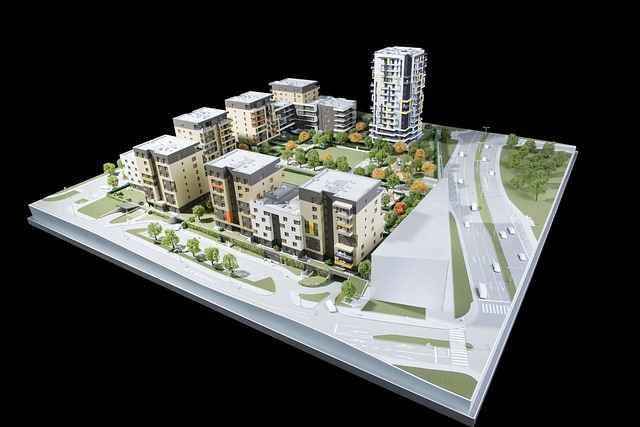
Public Space Design
Published on
Average Read time: 2 minutes
Public Space Design is crucial for creating vibrant, inclusive, and livable urban environments that foster community interaction, recreation, and well-being. Here are some key principles and elements involved in public space design:
Pedestrian-Friendly Environments: Designing streets, sidewalks, and plazas to prioritize pedestrians, cyclists, and other non-motorized modes of transportation. This includes widening sidewalks, installing crosswalks, adding pedestrian-friendly amenities, and reducing vehicle speeds to improve safety and comfort for pedestrians.
Green Spaces and Parks: Providing accessible green spaces, parks, gardens, and urban forests to enhance the quality of life and promote environmental sustainability. Green spaces offer opportunities for recreation, relaxation, exercise, and connection with nature, while also improving air quality, reducing heat island effects, and supporting biodiversity.
Plazas and Civic Spaces: Creating open and inviting gathering spaces, squares, and plazas where people can come together for social, cultural, and civic activities. Plazas serve as focal points for community events, markets, performances, and festivals, fostering a sense of belonging and civic pride.
Seating and Amenities: Installing benches, seating areas, picnic tables, and shade structures to provide comfort and convenience for users of public spaces. Amenities such as water fountains, restrooms, and Wi-Fi access enhance usability and encourage longer stays in public areas.
Lighting and Safety: Ensuring adequate lighting and visibility to improve safety and security in public spaces, especially at night. Lighting design can enhance the ambiance of public spaces, highlight architectural features, and create inviting nighttime environments that encourage continued use after dark.
Public Art and Cultural Expression: Integrating public art installations, sculptures, murals, and performance spaces to enrich the cultural fabric of urban environments and stimulate creativity and imagination. Public art serves as a means of expression, storytelling, and identity-making, fostering connections between people and their surroundings.
Universal Accessibility: Designing public spaces to be accessible and inclusive for people of all ages, abilities, and backgrounds. This includes providing ramps, elevators, tactile paving, and other features to accommodate individuals with disabilities and ensure equitable access to public amenities and activities.
Sustainable Design Practices: Incorporating sustainable design principles such as rainwater harvesting, permeable paving, native landscaping, and energy-efficient lighting into public space projects. Sustainable design not only reduces environmental impact but also promotes resilience to climate change and enhances the long-term viability of public spaces.
Pedestrian-Friendly Environments: Designing streets, sidewalks, and plazas to prioritize pedestrians, cyclists, and other non-motorized modes of transportation. This includes widening sidewalks, installing crosswalks, adding pedestrian-friendly amenities, and reducing vehicle speeds to improve safety and comfort for pedestrians.
Green Spaces and Parks: Providing accessible green spaces, parks, gardens, and urban forests to enhance the quality of life and promote environmental sustainability. Green spaces offer opportunities for recreation, relaxation, exercise, and connection with nature, while also improving air quality, reducing heat island effects, and supporting biodiversity.
Plazas and Civic Spaces: Creating open and inviting gathering spaces, squares, and plazas where people can come together for social, cultural, and civic activities. Plazas serve as focal points for community events, markets, performances, and festivals, fostering a sense of belonging and civic pride.
Seating and Amenities: Installing benches, seating areas, picnic tables, and shade structures to provide comfort and convenience for users of public spaces. Amenities such as water fountains, restrooms, and Wi-Fi access enhance usability and encourage longer stays in public areas.
Lighting and Safety: Ensuring adequate lighting and visibility to improve safety and security in public spaces, especially at night. Lighting design can enhance the ambiance of public spaces, highlight architectural features, and create inviting nighttime environments that encourage continued use after dark.
Public Art and Cultural Expression: Integrating public art installations, sculptures, murals, and performance spaces to enrich the cultural fabric of urban environments and stimulate creativity and imagination. Public art serves as a means of expression, storytelling, and identity-making, fostering connections between people and their surroundings.
Universal Accessibility: Designing public spaces to be accessible and inclusive for people of all ages, abilities, and backgrounds. This includes providing ramps, elevators, tactile paving, and other features to accommodate individuals with disabilities and ensure equitable access to public amenities and activities.
Sustainable Design Practices: Incorporating sustainable design principles such as rainwater harvesting, permeable paving, native landscaping, and energy-efficient lighting into public space projects. Sustainable design not only reduces environmental impact but also promotes resilience to climate change and enhances the long-term viability of public spaces.
By integrating these principles and elements into public space design, urban planners create welcoming, dynamic, and resilient environments that enrich the urban experience and contribute to the health, happiness, and social cohesion of urban communities.